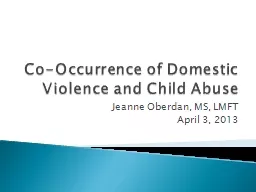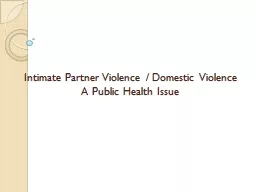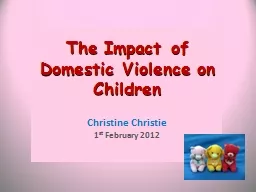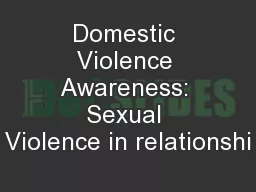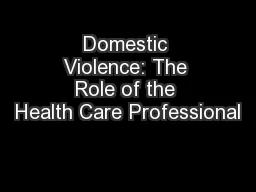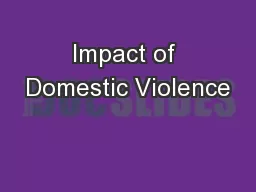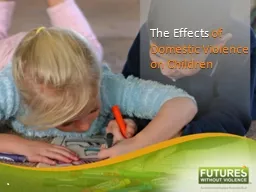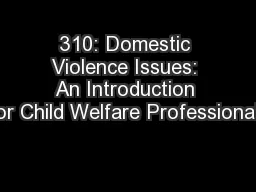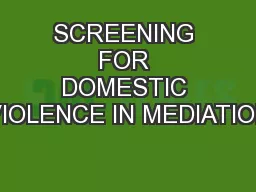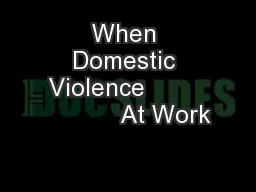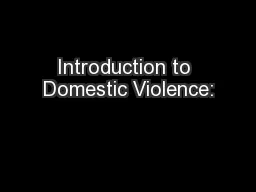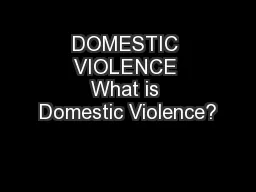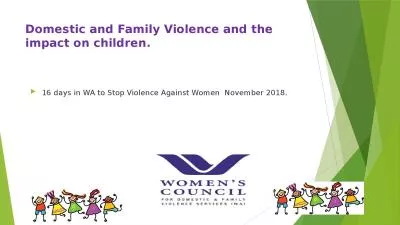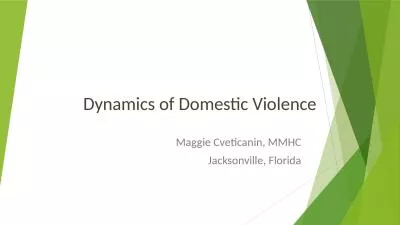PPT-Co-Occurrence of Domestic Violence and Child Abuse
Author : ellena-manuel | Published Date : 2016-08-13
Jeanne Oberdan MS LMFT April 3 2013 ALIVE Mission ALIVEs mission is to provide counseling emergency sanctuary and other critical services to adults and children
Presentation Embed Code
Download Presentation
Download Presentation The PPT/PDF document "Co-Occurrence of Domestic Violence and C..." is the property of its rightful owner. Permission is granted to download and print the materials on this website for personal, non-commercial use only, and to display it on your personal computer provided you do not modify the materials and that you retain all copyright notices contained in the materials. By downloading content from our website, you accept the terms of this agreement.
Co-Occurrence of Domestic Violence and Child Abuse: Transcript
Download Rules Of Document
"Co-Occurrence of Domestic Violence and Child Abuse"The content belongs to its owner. You may download and print it for personal use, without modification, and keep all copyright notices. By downloading, you agree to these terms.
Related Documents

